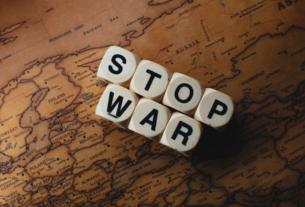After more than a decade of conflict, Syria stands at a crucial crossroads as it begins the difficult journey of political transition. The war-torn nation continues to struggle with internal divisions and international scrutiny, making the task of rebuilding governance structures and promoting unity incredibly complex. The delicate balance needed to navigate this transition highlights the urgent need for stability in a region that has long been plagued by unrest.
A Nation in Recovery
Syria’s civil war, which erupted in 2011, has left a profound impact on the country. Once-thriving cities like Aleppo and Homs now show the devastating effects of continuous fighting, while millions of Syrians remain displaced, both within the country and beyond its borders. As some areas start to recover, attention is turning to rebuilding infrastructure, meeting humanitarian needs, and establishing a path toward sustainable governance.
One of the most urgent challenges is the reintegration of displaced citizens. Reports indicate that many refugees encounter significant barriers when trying to return to Syria, such as bureaucratic obstacles, a lack of housing, and safety concerns. For example, those seeking to reclaim property or obtain identification documents often face difficulties at heavily monitored checkpoints. These checkpoints, still under the control of forces loyal to President Bashar al-Assad, starkly illustrate the ongoing tensions within the country.
Challenges of Political Transition
Central to Syria’s recovery is the issue of political transition. The Assad government, which has held a firm grip on power throughout the conflict, remains a divisive entity. While some see the government’s stability as essential for reconstruction, others contend that genuine progress necessitates a move toward more inclusive governance.
The international community has significantly influenced Syria’s political landscape. Initiatives led by the United Nations have highlighted the importance of constitutional reform and free elections. However, reaching a consensus among various stakeholders—both within Syria and abroad—has been challenging. The involvement of external powers like Russia and Iran adds another layer of complexity, as these countries continue to pursue their interests in Syria’s future.
The Human Dimension
The human toll of Syria’s conflict is immense and cannot be overlooked. The war has resulted in the loss of hundreds of thousands of lives and has left many others with deep physical and emotional scars. For those who have sought refuge outside the country, the possibility of returning is fraught with uncertainty.
A striking example is the plight of Syrians trying to obtain new passports to enable their return or travel. Many have shared their struggles with convoluted processes, often having to pay high fees or facing outright rejection. These obstacles only intensify the feelings of disenfranchisement among those eager to rebuild their lives in their homeland.
Pathways to Reconciliation
Reconciliation is seen as a vital element in Syria’s transition. Restoring trust among communities that have been divided by years of conflict necessitates open dialogue and a dedication to justice. Efforts to address grievances, such as truth commissions or local mediation initiatives, could be crucial in promoting healing and unity.
Moreover, economic revitalization is key to fostering an environment that supports reconciliation. With much of the country’s infrastructure devastated, investing in the reconstruction of schools, hospitals, and markets is essential. These initiatives not only meet immediate needs but also create job opportunities and promote growth, aiding in the stabilization of communities.
Syria’s political transition is a delicate balancing act. It needs to meet the calls for accountability and reform while ensuring enough stability to avoid a return to violence. The international community will play a vital role in offering support, whether through humanitarian aid, diplomatic efforts, or providing expertise in governance.
Ultimately, the success of this transition hinges on the willingness of Syrians to envision and strive for a shared future. This involves bridging the gaps between pro- and anti-government factions and ensuring that the voices of women, youth, and other marginalized groups are included in the decision-making process.




